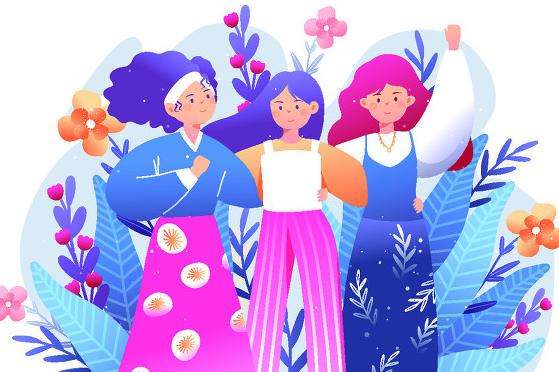A brush with tradition


Artist is determined to protect kangweihua, a unique style of painting from her hometown in the Ningxia Hui autonomous region, Chen Nan in Beijing and Hu Dongmei in Yinchuan report.
When Tian Kun was a little girl, she loved watching her mother painting on the walls around their bed.
It's a kind of folk art that was very popular in Tian's hometown, Tongxin county, Northwest China's Ningxia Hui autonomous region, during the 1960s and '70s.
Called kangweihua in Chinese, the practice was embraced by people of all ages in the small county back then, because the colorful, vivid paintings reflected the daily lives of the local people and were considered a typical home decoration at the time. Kangweihua literally means "paintings around bed", with kang being the name of a type of heated bed in the local dialect.
From animals and flowers to scenes of people working on the farm and children playing, the paintings mirrored the unique charm and beauty of the lifestyle in the villages and surrounding countryside.

The unique type of painting can be found in many villages in northern China, such as those in Shanxi province, where winter is very cold and people built kang, a living and sleeping platform at home to keep warm. It is used as a bed at night. Bedding is laid out for sleeping, but is put away in the morning. During the day, it provides a large warm platform upon which people undertake many household activities.
Tian's observation of her mother painting has developed into her own passion for the art. She learned to paint, with her mother, when she was a child and now, at the age of 54, she is still painting and trying to preserve the tradition.
Tian's mother learned the handicraft painting skill from her mother. According to Tian's grandmother, the origin of kangweihua was the mural paintings in temples built during the Qing Dynasty (1644-1911). Some folk artists tried to make a living by not only painting in temples but also painting for people in villages. Their painting techniques were passed down and developed into a kind of home decoration.
Usually, the height of these paintings is about 70 centimeters, while the length depends on the various sizes of the beds. Before painting, the artists need to polish the walls to make sure they are smooth. They then perform the necessary measurements and draw out the frame with simple, clean lines before drafting sketches with black and white pencils. When the outline of the paintings are done, the artists use acrylic or oils paints to color them.

"The content of Ningxia's kangweihua is mainly flowers, mountains, food, landscape and cute animals. Bright colors, such as green and red, are mostly used," says Tian.
"My mother's favorite patterns for her paintings were peony flower, grape, bamboo and chili. She loved coloring her paintings with her fingers.
"Even when she was 70 years old, my mother still had vivid memories about her paintings," Tian adds.
Since 1990, Tian has been working at the local cultural center of Tongxin county, where she concentrates on painting and preserving the art of kangweihua.
The first piece of work Tian created featured patterns her mother loved. It was inspired by her childhood memories and took Tian over a week to finish. It was later incorporated in various products, such as refrigerator magnets and ceramic tiles.
A series of paintings about her mother's daily life, such as cooking in the kitchen, braiding children's hair and doing housework, are now displayed at the local cultural center in Tongxin county.

Since Ningxia is home to people of the Hui ethnic group, Tian also paints aspects of Hui culture, such as dancing and traditional clothes.
Tian has also been commissioned to paint on the walls of restaurants, art centers and galleries. In 2016, she was sent by the Ningxia Intangible Cultural Heritage Center to study folk painting in Fuzhou, Fujian province, where she learned to combine lacquer art with her work.
In 2017, she was listed as an inheritor of the folk painting intangible cultural heritage of Ningxia.
"I am drawn to kangweihua because it offers me lots of space to imagine and create. Most importantly, the process of painting creates a special bond between me and my childhood, between me and my hometown, between me and my mother," Tian says.
She also laments that, with urbanization, many houses in her village were renovated and kangweihua is no longer used by many people as home decoration.

For Tian, having her paintings exhibited is not enough because she hopes to display the folk art to a wider audience. She tries to combine the old folk art with contemporary art, craft and design, such as creating stationery, phone cases and mouse pads, which may be more appealing to new and younger audiences.
Now, Tian has two students who are art teachers at primary schools in Tongxin county, and Tian's son, who majored in animation at university, often gets inspired by his mother's works.
According to the official website of Tongxin county, kangweihua has become an optional course at local primary schools, which enables children to learn and appreciate the folk art form from a young age.
"When people want to capture and display their cherished memories, those paintings help them to revisit those good old days," Tian says.




